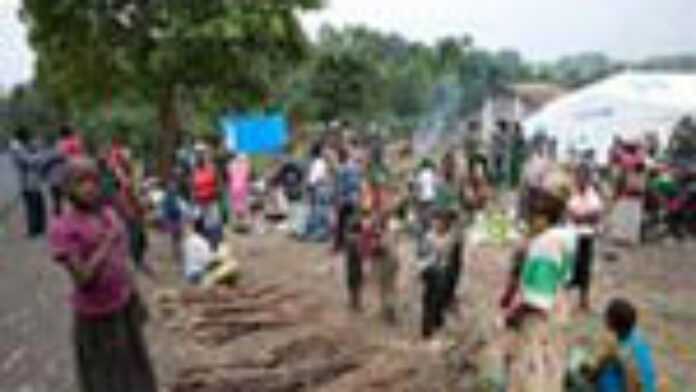
A state-within-a-state controlled by former Congolse-Tutsi rebels, is emerging in the east of the Democratic Republic of Congo once controlled by the Hutu perpetrators of the 1994 Rwanda genocide, raising the chances of renewed violence in the Great Lakes region.
The mini state now run by former rebels of Congolese-Tutsi known as the CNDP collect taxes, appoint local officials and man border posts. A flag now wavers from atop a hill signifying self-government.
According to reports, the CNDP have allowed at least 60,000 people across the border from Rwanda in recent months leading residents in the region to describe the situation as an invasion by Rwanda.
“The situation is explosive in Masisi [one of the districts under the new flag]. I am not really optimistic that this can be resolved without conflict,” Vice president of the provincial assembly based in Goma, Jean Baumbiliya Kisoloni said.
The provincial coordinator of the National Commission for Refugees, Laingulia Njewa, told news reporters that many of the newcomers might be not refugees but rather economic migrants, abandoning their tiny, overpopulated state in search of, literally, greener pastures. United Nations officials, legislators and traditional chiefs are already forming pacification committees to try and resolve the rising tensions.
Refugees International (RI) revealed that people from Rwanda are “attempting to pass themselves off as Congolese refugee returnees and arriving to areas under the protection of the CNDP, adding to the frictions that are rising.” In a manifesto published after his 2009 capture, former CNDP leader Laurent Nkunda said that without colonization, today’s Congo would not exist and his Congolese home district would be part of Rwanda.
The RI report also found that large farms are being established in the area through heavy taxation and threats of violence to drive out land owners. It also said there were reports of armed herders in Masisi serving as a militia.
After the 1994 genocide, Hutu extremists fled to east Congo and took control of Masisi, the land now in dispute. The over 54,000 Congolese Tutsis in Masisi at the time fled to Rwanda because Masisi was to be declared a “Hutuland.”
The Congolese government had failed to facilitate the return of the Congolese Tutsis who were forced to flee Masisi into Rwanda. According to experts, this failure led to the formation of a Congolese Tutsi rebellion known as the CNDP, who wanted their parents to return to Masisi from Rwanda. The rebellion led by General Laurent Nkunda eventually reclaimed Masisi. The CNDP tripled the size of Masisi to include lucrative mines and tens of thousands of acres of land.
“What’s going on here now [in Masisi] is boiling under the surface, a calm before the storm, and when it explodes …,” Camilla Olson of Refugees International was quoted by AFP.
Congolese Tutsi rebel leader, Gen. Nkunda was arrested in 2009 and a peace agreement was signed between Rwanda and Congo. But The CNDP says it will not dismantle its “parallel administration” until the Congolese government fulfills its part of the peace accord by organizing the return of the refugees and giving Congolese Tutsis positions in the government.
The U.N. refugee agency has taken names of thousands of new arrivals from Rwanda but is unable to match them to names of refugees registered in Rwandan camps, and has vowed to repatriate the 54,000 Congolese Tutsi refugees registered with the U.N. in Rwanda. Karl Steinacker of the U.N. High Commissioner for Refugees has been unable to explain the origins of some “undocumented” people crossing from Rwanda.

